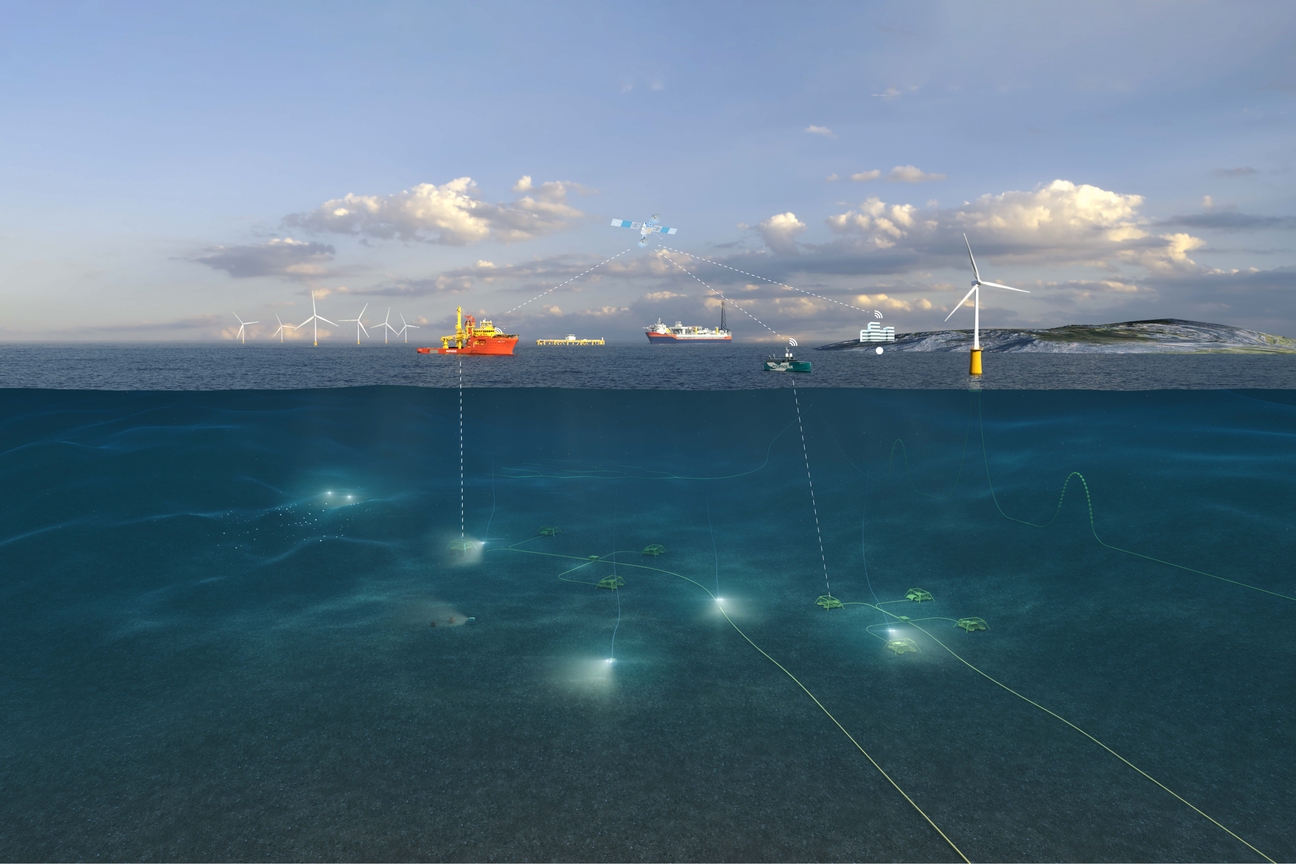
Connectivity as enabler for #remote first
Aker BP is a company engaged in exploration, field development and production of oil and gas on the Norwegian continental shelf. The company operates six field centres: Alvheim, Ivar Aasen, Skarv, Edvard Grieg, Ula and Valhall, and is a partner in the Johan Sverdrup field. Measured in production, Aker BP is one of the largest independent oil companies in Europe. The strategy as a pure-play oil and gas company is straightforward; prioritising safe operations, aiming for high efficiency, low costs, and minimal emissions to ensure sustainable growth. The company has a strong drive towards remote operations and have defined #remotefirst as a core business KPI within all business units, hereunder also subsea operations. Any work that can be performed from onshore, shall be performed from onshore, is a leading approach in the company.
In a few years, more than 50% of Aker BP’s oil & gas production will come from subsea wells several kilometres away from the topside processing facility. For the Aker BP Subsea Execution & Survey Team, responsible for the delivery of first class IMR and survey services Aker BP assets, it is important to deliver on our company’s #remotefirst ambition.
With this context in mind, Aker BP together with IMR contractor and strategic partner DeepOcean have been testing onshore remote operation of work class and inspection class ROV’s working off the IMR vessel Edda Fauna. The Remote Operations Center, ROC, is hosted by Remota at Killingøy near Haugesund where ROV pilots and technicians now have their daily work.
Basis for operational planning was the area coverage maps from the 4G/5G providers showing where we could expect adequate bandwidth / latency to enable onshore operated ROV operations. This immediately presented us with a challenge since the offshore work is planned and executed as campaigns where several work scopes are executes as a package. We could immediately see that some of our work locations were outside the coverage areas while others were borderline within. We also anticipated that the connectivity demand for running ROV operations compared to the standard traffic normally running over 4G/5G systems would be higher, hence areas indicating sufficient coverage could still be out of range. With this in mind, we decided to bring one additional offshore crew to not jeopardize the mission, being unable to operate the ROV’s and deliver the works as intended.
We also had to consider that a typical IMR vessel operates in short durations at each work location and is likely to change heading relative to optimal wind direction. Vessel heading, antenna shadow effects, water surface reflections, waves etc. are all affecting the connectivity, latency, bandwidth, and stability; hence we have experienced that the reality does not always match the advertised area coverage map from the connectivity providers. In one vessel heading the connectivity was OK but once heading was changed, the latency and / or bandwidth changed, and the operation failed.
Reliability and efficiency are important for our underwater operations. Especially when performing corrective maintenance which requires production shut in, every minute counts! During the testing, the ROV pilots sometimes experienced difficulties in performing manipulator operations (T4, Atlas etc.) due to latency being above threshold desired threshold. Being unable to deliver trivial ROV operations has been frustrating for the pilots which felt that even the easiest tasks was difficult or even impossible to perform safely and efficiently. Despite the frustration, the crew managed to keep a constructive approach to the challenge and kept on documenting experience throughout the entire mission.
Connectivity via LEO (low earth orbit) satellites have also been evaluated and tested, in this case both Starlink and OneWeb. Starlink has shown good properties in terms of bandwidth, latency, and coverage whereas OneWeb has had some issues related to latency as the LEO’s operate in an orbit further out from the Earth’s surface. Starlink’s delivery of bandwidth as “best endeavour” with no minimum guaranteed speed is identified as a risk for critical operations as the available bandwidth is dependent on the number of users. We expect both systems to improve over time and ultimately be a strong supplement to, and potentially take over from today’s 4G/5G systems.
In the near future it is likely that Aker BP will start using uncrewed surface vessels (USV’s) for several types of subsea operations. These are smaller type vessels (< 24m) carrying a medium size work class ROV or a survey / inspection ROV as its only payload. There is little doubt that these USV’s will be able to operate in open waters in the North Sea, but the real challenge is how to get the payload (i.e. the ROV) to deliver the different varieties of required work. Because the work doesn’t go away just since we set our mind on using USV’s! The keyword here is of course connectivity. And without the testing performed during 2023 on Edda Fauna, many of the challenges would not have been identified and understood. Documentation from the offshore testing will now be used as a key enabler for USV’s and potentially ready the ground for the work they are meant for – not sailing without a purpose but actually being a game changer in how we perform underwater operations – clean, safe and efficient.